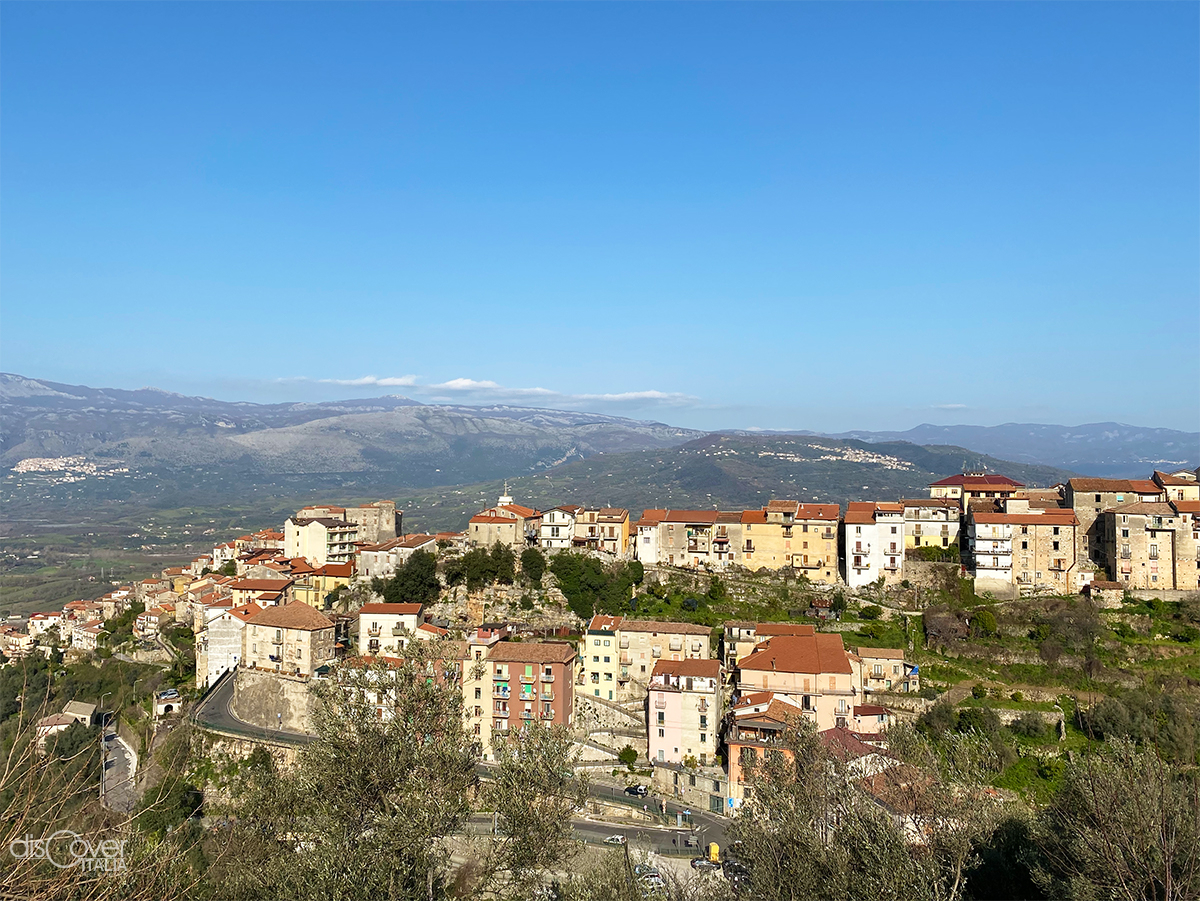A spur of rock between Mount Alburno to the north and Mount Vesole to the south, dominating the Calore Lucano valley. An ideal location, naturally protected, immediately noticed by the first inhabitants of that region, of Etruscan origins, and which later attracted the attention of the Greeks of Poseidonia as well.
 There, in fact, they erected a sanctuary similar to the coastal Heraion at the mouth of the Sele, in honor of a divinity of the waters. And several centuries later, the inhabitants of Paestum went there, forced to leave a city slowly becoming a swamp and to find safer places in the indoor, sheltered from Saracen attacks. Thus, in 1092, a document mentioned San Nicola de Aspro and his abbey of Cava de 'Tirreni. Even then there was a fortress, a tower, which was useful to Frederick II after the conspiracy and the siege of Capaccio. In 1245 he transformed the original structure into a castle with solid walls and towers, to defend the valley. A function that the Angevins confirmed, when they took over from the Swabians and strengthened the defensive characteristics of the fortress. Which Charles I entrusted to the faithful Pandolfo Fasanella, followed by other noble families, up to the Sanseverinos, owners of the fortress until the extinction of the family in the XVI century. In the middle of that century, the barony of Cilento was divided into various feuds, sold to rich and known Neapolitan families and the Rocca de Aspis (from the Greek "shield", "defense") was purchased by the Filomarino in 1549. Giovan Battista was the first lord. It was he, who had distinguished himself from his brother Tommaso in the battle of Otranto against the Turks and received from Pope Sixtus IV the relics of Saints Sinforosa and Getulio, the new patrons of Roccadaspide. And with the Filomarino family, the castle was enlarged and renovated several times between the XVI and XVIII centuries. Then, in the nineteenth century, the Giuliani family took over, who still own it and preserve the artistic, historical and documentary heritage that is the fruit of many centuries of history.
There, in fact, they erected a sanctuary similar to the coastal Heraion at the mouth of the Sele, in honor of a divinity of the waters. And several centuries later, the inhabitants of Paestum went there, forced to leave a city slowly becoming a swamp and to find safer places in the indoor, sheltered from Saracen attacks. Thus, in 1092, a document mentioned San Nicola de Aspro and his abbey of Cava de 'Tirreni. Even then there was a fortress, a tower, which was useful to Frederick II after the conspiracy and the siege of Capaccio. In 1245 he transformed the original structure into a castle with solid walls and towers, to defend the valley. A function that the Angevins confirmed, when they took over from the Swabians and strengthened the defensive characteristics of the fortress. Which Charles I entrusted to the faithful Pandolfo Fasanella, followed by other noble families, up to the Sanseverinos, owners of the fortress until the extinction of the family in the XVI century. In the middle of that century, the barony of Cilento was divided into various feuds, sold to rich and known Neapolitan families and the Rocca de Aspis (from the Greek "shield", "defense") was purchased by the Filomarino in 1549. Giovan Battista was the first lord. It was he, who had distinguished himself from his brother Tommaso in the battle of Otranto against the Turks and received from Pope Sixtus IV the relics of Saints Sinforosa and Getulio, the new patrons of Roccadaspide. And with the Filomarino family, the castle was enlarged and renovated several times between the XVI and XVIII centuries. Then, in the nineteenth century, the Giuliani family took over, who still own it and preserve the artistic, historical and documentary heritage that is the fruit of many centuries of history.
In the center of the hamlet that has developed around it, the castle, restored with respect for its past, stands out in all its magnificence. With a perimeter of 400 meters, mighty walls, battlements functional to defense, it has seven towers, two quadrangular, the oldest to east and west, and five cylindrical, dating back to the Swabian and Angevin periods. The entrance steps, the vaulted passage in the internal courtyard, the staircase that leads to the owners' residence and the 33 rooms are from the eighteenth century. To which is added, perhaps, "the extra room". The one that appears suddenly, showing curious objects and characters, and then disappears behind an anonymous wall. Mysteries and legends of ancient residences ...
Roccadaspide castle, city of the brown IGP, can be visited and sometimes the owners themselves become passionate guides for guests.



Comments powered by CComment